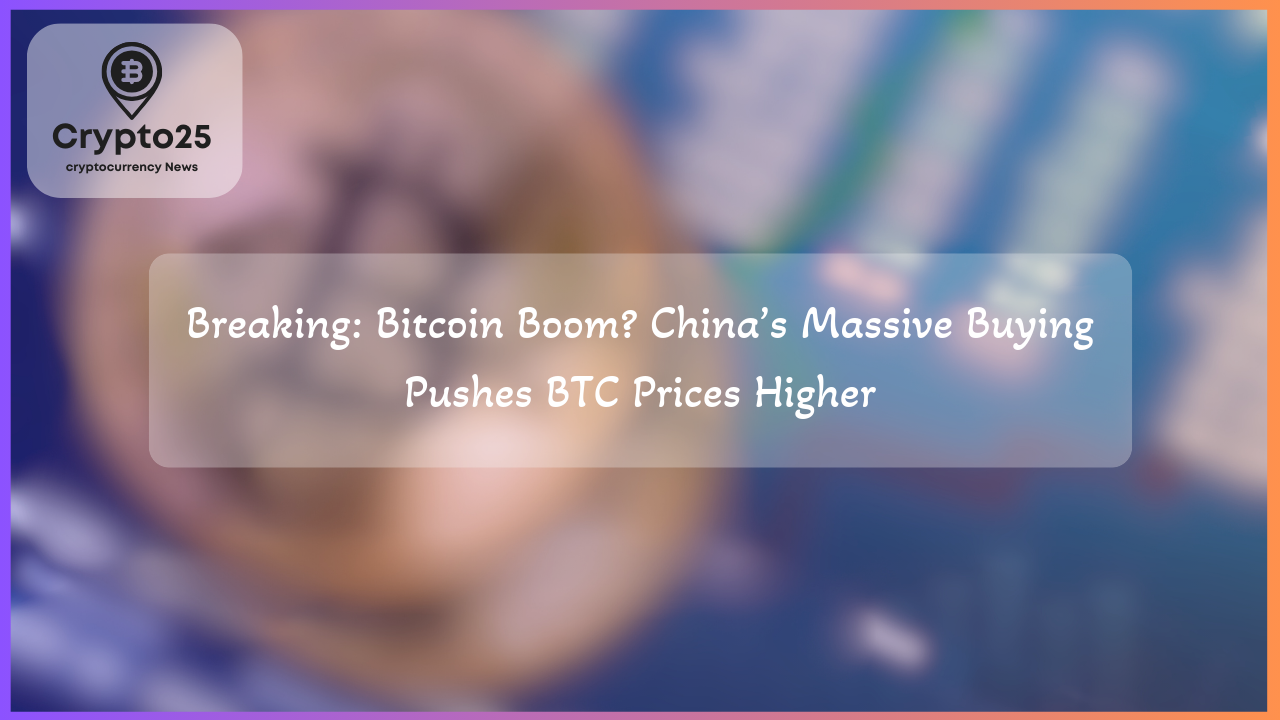
Amid rising geopolitical tensions and global economic uncertainty, the financial landscape is rapidly shifting. Bitcoin is emerging as a steadfast digital alternative to gold, cementing its place as a primary hedge against inflation and market fluctuations. Meanwhile, gold’s historic role as a safe-haven asset remains solid, with countries like China aggressively bolstering their reserves. Let’s explore the latest crypto and gold market trends.
## China’s Aggressive Gold Accumulation as Bitcoin Remains Strong
Recent developments reveal that the People’s Bank of China (PBOC) has significantly ramped up its gold purchases. Over the past month alone, the bank added five tonnes of gold to its reserves, marking the fifth consecutive month of increased acquisition. This brings China’s total gold reserves to a substantial 2,292 tonnes, comprising approximately 6.5% of its total official reserve assets. Analysts view this as a calculated move amidst heightened economic tensions between the US and China.
Similarly, Bitcoin has demonstrated remarkable resilience during these uncertain times. Despite minor fluctuations, its price remains above the $87,000 mark. The cryptocurrency’s ability to rebound quickly even after moments of market stress, such as US President Donald Trump’s recent 245% tariff on Chinese imports, showcases its growing appeal as a digital version of gold. For investors worried about global economic instability, this parallel rise in gold and Bitcoin is signaling a shift toward reliable alternatives to fiat currencies.
| Title | Details |
|---|---|
| Gold Reserves | 2,292 Tonnes |
| Bitcoin Price | $87,000+ |
## Rise of Bitcoin Whales Amidst Volatile Markets
Another critical trend is the growing number of Bitcoin “whale wallets.” According to Glassnode data, wallet addresses holding at least 1,000 Bitcoin have surged by over 60 since early March. This growth represents a notable rise from 2,030 such wallets in late February to 2,100 by mid-April, marking the highest number in four months. These large-scale investors are doubling down on Bitcoin despite challenging market conditions, a sign of their confidence in its long-term potential.
Bitcoin’s appeal as a hedge against inflation has deepened as institutional and retail investors seek alternatives to traditional currencies. In many cases, Bitcoin is now being viewed as “digital gold.” This sentiment is reinforced by China’s apparent pivot from US dollar-denominated assets, further signaling a preference for tangible or decentralized investments. While the physical gold market surges, Bitcoin’s rising adoption highlights a parallel shift in investor confidence towards digital assets.
## Safe Haven Assets Gain Traction Amid Global Uncertainty
Gold prices have also reached record highs, climbing to $3,401 per ounce, a sharp $100 spike in just a week. Mounting trade tensions between the US and China serve as a primary catalyst for this increase, with gold being a go-to asset for investors seeking safety. Reports suggest China’s aggressive gold purchases are a deliberate strategy to fortify its reserves during this turbulent economic period.
Interestingly, Bitcoin seems to share gold’s upward momentum. Both assets are thriving as investors lean toward safe-haven options to shield their portfolios from the financial instability stemming from ongoing trade wars and inflationary pressures. However, Bitcoin offers an added digital advantage—it is decentralized, more liquid, and quicker to trade than physical gold. This dual rise of gold and Bitcoin exemplifies a shifting narrative where old and new monetary systems coexist as pillars of financial security.
## Mixed Sentiments Surrounding Bitcoin’s ETF Flows
Despite Bitcoin’s promising performance, mixed signals abound in the market. For instance, nearly $5 billion reportedly exited Bitcoin ETFs after reaching all-time high aggregate flows. On the other hand, Bitcoin’s price has remained stable, showcasing its resilience even in the face of ETF outflows. Additionally, there are conflicting reports from China. While rumors circulate about the country potentially building a strategic Bitcoin reserve, other indications suggest China may have offloaded 15,000 BTC on offshore exchanges.
Such dynamics make it clear that Bitcoin, much like gold, is heavily influenced by geopolitical and economic developments. Investors continue to watch these assets closely, assessing their roles as both hedges and growth opportunities in an evolving global market. Bitcoin’s stability despite turbulent news cycles solidifies its status as a viable counterpart to gold.
As the global economic climate remains uncertain, gold and Bitcoin are cementing their roles as safe-haven assets. While gold’s long history as a store of value remains unchallenged, Bitcoin’s growing adoption and resilience highlight its potential as the digital evolution of traditional monetary systems. Moving forward, both assets are likely to gain further prominence as investors worldwide adjust to shifting market dynamics and rising economic challenges.
